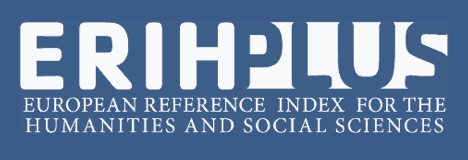Analysis socioenvironmental and microbiological of water in microbacy rio de janeiro, barreiras, bahia
Abstract
It`s possible to performer evaluation of the quality of the water resources to determine and/or diagnose the real conditions. The objective is to analyze the role of water as a risk factor for consumers' health. The methodology is resumed in evaluating the socio-environmental situation of water users (11 communities), well as microbiological analyzes of water in the community of Pedra de Amolar, using the Quant Tray 2000 method, Colilert system for coliforms. 47% of community water consumed in nature, 37% consumed filtered water and 16% fry. In the microbiological analyzes, 62.5% of the samples had a limit of thermotolerant coliforms greater than 1.000 UFC/100 ml of water, suggesting a contamination by coliforms in the water that supplies the Pedra de Amolar community and reflects a health risk situation.
References
BRASIL. Lei 9.433/1997, Institui a Política Nacional de Recursos Hídricos, promulgada em de 8 de janeiro de 1997. Brasília: DOU, 1997.
BRASIL. Resolução no 357/2005, Dispõe sobre a classificação dos corpos de águas e diretrizes ambientais para o seu enquadramento, bem como estabelece as condições padrões de lançamento de efluentes, promulgada em 17 de março de 2005. Brasília: DOU, 2005.
BRASIL. Vigilância e controle da qualidade da água para consumo humano. Secretaria de Vigilância em Saúde. Brasília: Ministério da Saúde, 2006. 213p.
DIAS, A. C.; POTT, A. A influência da mata ciliar na qualidade das águas do córrego Bom Jardim – Brasilândia/MS: Estudos iniciais. Periódico Eletrônico Fórum Ambiental da Alta Paulista, v. 9, n. 2, p. 01-16, 2013.
FARIA, T.; PAULA, R. A. O.; VEIGA, S. M. O. M. Qualidade microbiológica da água para consumo humano em unidades de alimentação escolar Tatiane. Revista da Universidade Vale do Rio Verde, Três Corações, v. 11, n.1, p.135-144, 2013.
FRANCO, B. D. G. M.; LANDGRAF, M. Microbiologia dos Alimentos. São Paulo: Atheneu, 2008. 182p.
FRANCO, R. M. B. Protozoários de veiculação hídrica: relevância em saúde pública. Revista Panamericana de Infectologia, v. 9, n.1, p.36-43, 2007.
LIBÂNIO, M. Fundamentos de qualidade e tratamento de água. Campinas, SP: Átom, 2010. 494p.
PINTO, N. O.; HERMES, L. C. Sistema Simplificado para Melhoria da Qualidade da Água Consumida nas Comunidades Rurais do Semi-Árido do Brasil. Jaguariúna: Embrapa Meio Ambiente, Documentos 53, 2006. 47p.
PREFEITURA MUNICIPAL DE BARREIRAS. Plano setorial de abastecimento de água e esgotamento sanitário de Barreiras. Barreiras-BA, 2010. Disponível em http://barreiras.ba.gov.br/pdf/rel_pssb_barreiras.pdf. Acesso em 05 de jan. 2017.
REGO, N. A. C.; SANTOS, J. W. B. dos; TEIXEIRA, A. Gestão de recursos hídricos: Estudosquali-quantitativos da condutividade elétrica das águas superficiais da Bacia Hidrográfica do Rio Cachoeira – Sul da Bahia. 3ª ed., Salvador-BA, Ingá, 2009.
SHERPHERD, K. M.; WYN-JONES, P. Private water suppliesand the local authority role: results of UK national survey. Water Science and Technology, UK, v. 35, p.41-45, 1997.
SILVA, M. H. R.; GUERRA, O. G.; BARROS, A. A. S..; BLINI, R. C. B. Análise microbiológica da Água do Ecossistema de Lacustre Urbano:Lagoa Grande do Município de Três Lagoas/ MS. Colloquium Vitae, Presidente Prudente, v. 5, n. Especial, p. 01-08, 2012.
SILVEIRA, N. F. A.; SILVA, N. S.; JUNQUEIRA, V. C. A.; CANTÚSIO NETO, R.; Manual de Métodos de Análise Microbiológica da Água.1ª ed., Varela, São Paulo-SP, 2005. 164p.
TUNDISI, J. G.; MATSUMURA-TUNDISI, T. Recursos hídricos no século XXI. São Paulo: Oicina de Textos. 2011. 328p.
YAMAGUCHI, M. U.; CORTEZ, L. E. R.; OTTONI, L. C. C. Qualidade microbiológica da água para consumo humano em instituição de ensino de Maringá-PR. O mundo da saúde, São Paulo, v.37, n.3, p.312-320, 2013.
Keywords
Policy Proposal for Free Access Journals
Authors who publish in this journal agree to the following terms:
a. Authors retain the copyright and grant the journal the right of first publication, with the work simultaneously licensed under the Creative Commons Attribution License which allows the sharing of the work with acknowledgment of the authorship of the work and initial publication in this journal.
b. Authors are authorized to take additional contracts separately, for non-exclusive distribution of the version of the work published in this journal (eg publish in institutional repository or as a book chapter), with acknowledgment of authorship and initial publication in this journal.
c. Authors are allowed and encouraged to publish and distribute their work online (eg in institutional repositories or on their personal page) at any point before or during the editorial process, as this can generate productive changes, as well as increase the impact and The citation of published work (See The Effect of Free Access).





















